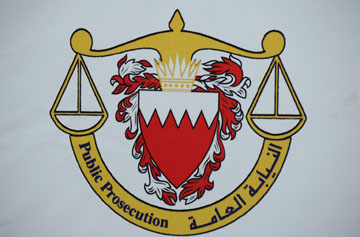ID :
408338
Tue, 05/31/2016 - 22:05
Auther :
Shortlink :
https://www.oananews.org//node/408338
The shortlink copeid
Appeals court upholds death sentence for police killers

Manama, May 31 (BNA): The Terror Crime Prosecution Chief Advocate General Ahmed Al Hammadi said the High Court of Appeals today upheld death and lifetime sentences pronounced by a lower court against defendants for killing three officers.
The defendants were found guilty of placing an explosive device to target police forces in the Northern Area on March 3, 2014, that killed first-lieutenant Tariq Mohammed Al Shehi and policemen Mohammed Raslan and Ammar Abdou Ali Mohammed.
The court ruled the execution of the second, third and fourth suspects and a life in jail term for the first suspect and the fifth to the tenth suspects.
The court also revoked the citizenship of the first eight suspects, and ordered all suspects to re-pay collectively for the damage incurred from the incident.
The suspects had lured the police forces to the location of the blast through rioting that necessitated the intervention of the public order servicemen.
The suspects detonated the device as the police force arrived, resulting in the death of three officers and the injuries of 13 others.
Investigations carried out by the public prosecution indicated that the first and second suspects had formed a terror group as part of the so-called Saraya Al Ashtar terrorist organisation.
They succeeded in recruiting the other suspects who had experience in making and using explosives and in acts of rioting with the purpose of forming groups that undertake terror attacks against policemen, destruction of vital security installations to undermine public order and to prevent the authorities from carrying out their work.
The suspects made several explosive packages and held several meetings during which they prepared their criminal plot to achieve the goals and purposes of the group.
As part of their terror plot, they agreed to use a funeral procession and laid explosives attached to remote detonation devices in different locations where in they knew the forces would gather to maintain public order. They lured the forces to the locations of the explosives with the purpose of causing the biggest number of causalities among them.
The suspects during the previous night placed three explosives on the road and tasked the fourth suspect to detonate the first which killed the three policemen. They assigned other members of the group who are still at large to detonate the second and third under the supervision of the third suspect while the fifth suspect would photograph the location and the rest of suspects would monitor the situation. On March 3, 2014, they faked the rioting to lure the police forces to the location. The fourth suspect followed the police arrival from the top of a building and as soon as the servicemen arrived he detonated the explosive using a mobile phone.
The suspects could not detonate the two other explosives as the second package was affected by the first blast and since none of the policemen has approached the location of the third explosive.
The prosecution referred the eight suspects, three in absentia, to the fourth High Criminal Court.
The case was deliberated during the sessions of the Criminal Court which listened to their defence arguments. The court enabled them to present all aspects of their defence arguments.
The court listened to the Public Prosecution's argument in conclusion of which it demanded the maximum penalty be meted out on the suspects. The court issued its sentence after it found the suspects guilty.
The court relied in its verdict on the firm evidence presented by the Public Prosecution that the suspects had committed the crimes ascribed to them, including reliance on witnesses' testimonies, seized materials and tools used in making the explosives found in possession of the suspects, including evidence of communications found in the phone of one of the suspects on the day of the incident.
The court also relied on technical reports including traces of human cells of one of the suspect on the explosives placed on the location of the crime.
Under Bahrain’s law, the case can be taken to the Cassation Court for the ultimate ruling.





